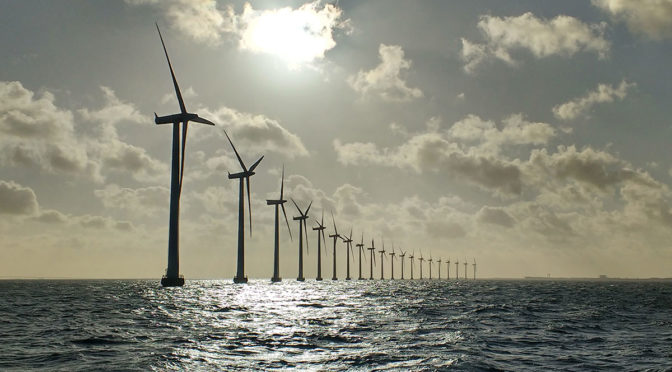IRENA has published a report which, amongst other things, concludes that ‘offshore wind energy stands on the cusp of rapid and widespread growth’ reports Andrew Williams.
So, what are the key findings of the International Renewable Energy Agency (IRENA) report? What methods did the authors use to arrive at their conclusions? And how best might stakeholders in the offshore wind energy industry go about acting upon the recommendations outlined in the report?
MARKET CONFIDENCE
As Francisco Boshell, Analyst – Markets and Standards for Renewable Energy Technologies at IRENA, explains, the Nurturing Offshore Wind Markets: Good practices for International Standardisation (IRENA, 2018, Abu Dhabi) report is based on the findings of numerous interviews with industry experts, associations, literature research and discussions with stakeholders in IRENA member countries interested in deploying the technology. It was prepared in recognition of the fact that, globally speaking, offshore wind is ‘rapidly moving from a demonstration to a commercialization stage.’
“The next step is to scale up the deployment of the technology through expanding it into new markets – that is, globalizing it,” he says.
However, in order to help in the process of ramping up such attempts at increased commercialisation, Boshell points out that globalisation and trading of the technology require, amongst other things, ‘confidence from market actors in the technology and internationally harmonized specifications for the industry to be able to reduce cost via economies of scale.’ In moving towards meeting these requirements he argues that international standards and quality control measures are ‘key instruments.’
TAILORED SOLUTIONS
Another key section of the report describes how, in order to realise offshore wind’s bright future, the industry has ‘looked back to learn lessons in safety, reliability and risk mitigation from the more traditional offshore oil and gas industry.’ In doing so, Boshell describes how specific challenges remain to be addressed that have ‘no historical reference from other industry sectors, such as structural designs for dynamic machines in the ocean and standards for floating turbines’ – both of which he believes require ‘new thinking and tailored solutions to be documented in international standards.’
“Moreover, with today’s international standards being primarily a reflection of European weather and sea conditions, an evolution in standards is necessary to ensure they remain relevant and applicable to markets with diverse environmental conditions for offshore wind, for example, deeper water, ice and hurricanes – conditions that are likely to be found in offshore wind’s new regions such as USA, China, Japan and Korea,” he says.
This is particularly important in view of IRENA’s position that the industry must globalise to reach its full potential, and in doing so would need to succeed in conditions that are not familiar to European waters. However, in moving towards incorporating such conditions in international standards and quality control frameworks, Boshell is keen to point out that the sector will now be called upon to undertake much more work and investigation.
Looking ahead, he also highlights the fact that the report calls upon stakeholders across the global offshore wind energy development industry to actively engage in ongoing international standardisation processes for the technology. In doing so, he believes that existing standards of the type developed by the International Electrotechnical Commission (IEC) could be used as a useful platform to document international industry good practices.
Moving forward, Boshell confirms that the report calls on organisations to foster cross-fertilisation between offshore wind and other industry sectors – particularly those using similar technology or operating in similar environments, such as onshore wind and offshore oil & gas.
“[We need to] facilitate a dialogue between different market actors – including the offshore industry and R&D organisations, as well as electricity utilities and policy makers. The offshore wind energy industry also needs to foster international collaboration to ensure the sharing of best practices and the harmonization of technical requirements,” he adds.
maritimejournal.com


